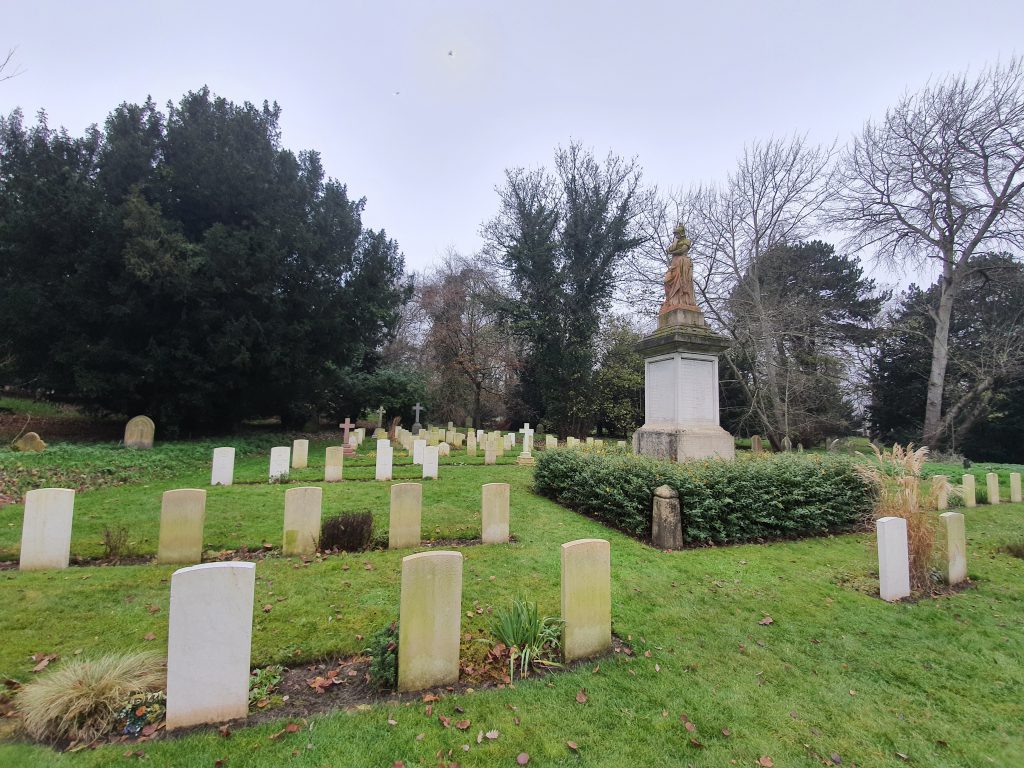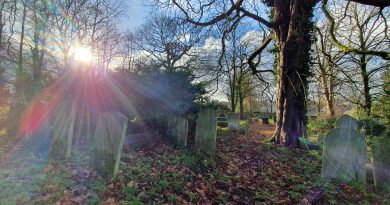Norwich – Earlham Cemetery (David McSweeny)
This is one of the earliest graves in the old military burial area at Earlham Cemetery in Norwich. This story particularly interested me as the funeral was so well covered in the local press that it gave me quite a picture of what the burial must have been like.
It’s not clear whether it’s David McSweeny or David McSweeney, I suspect it’s the latter, although the grave uses the former spelling. He was born in around 1839 and he joined the military in 1858, serving in the 7th Queen’s Own Hussars and he had reached the rank of Paymaster Sergeant.
It is the death of David that received much local press attention, including the inquest and the burial of his body. On the evening of 24 June 1875, he was in a rowing boat with his friend David Couper and they were nearby to St. Anne’s Staithe in Norwich (pretty much opposite the Queen of Iceni, nearby to the new St. Anne’s housing development) when a steamer hit them. David’s body was pulled out of the water a few minutes later, but he was already dead, aged just 36.
A coroner’s court took place in July 1875 at the Cinder Oven pub on King Street, in Norwich (a building now demolished, but it once jutted on to the city wall near to the Carrow Bridge boom tower). The Deputy Coroner heard evidence from numerous witnesses, but there was confusion as to how David had fallen into the water and died. Captain Thompson from the army said “it seemed rather odd that no-one appeared to see the deceased get into the water”.
One of the witnesses was WR L’Estrange, a brewer at the Bullards brewery, who said that there was no need for David to have jumped into the water as he would have been safe given the low speed of the steamer. When asked, he put his decision to jump as being “out of terror”. Captain Thompson confirmed that David hadn’t drunk alcohol for 15 years as he was tee-total, so a poor decision due to drink was ruled out, and he also confirmed that David was able to swim. The whole thing was a bit of a mystery and a verdict of accidental drowning was given.
David wasn’t married, but the non-commissioned officers clubbed together to pay for a headstone for him, a rather lovely gesture. And this is how the Norfolk News reported David’s funeral:
“On Monday afternoon, the remains of the Sergeant were interred at the Norwich Cemetery. The firing party was followed by the body of the deceased borne on a gun-carriage, the coffin being covered by a velvet pall upheld at the sides by six Sergeants of the regiment. Next came deceased’s charger, followed by the men of the troop. The military procession was succeeded by three mourning-coaches containing the relatives and friends of the deceased, who was unmarried. The bands of the regiment played a dead march, and several thousand persons assembled to watch the mournful procession on its route to the place of burial”.
The thought of that number of people watching and paying their respects is quite a picture to build up in the mind. The backdrop to this though is that the military were held in high repute by most locals and the period when David died was one where there were relatively few British military deaths. Over 10,000 had lost their lives in the Indian Rebellion in the 1850s, but the next major loss of life wasn’t until the late 1870s with the Second Anglo-Afghan War and the Anglo-Zulu War.
This does all mean that although David died relatively young at 36, his death was at least marked with respect and dignity.




